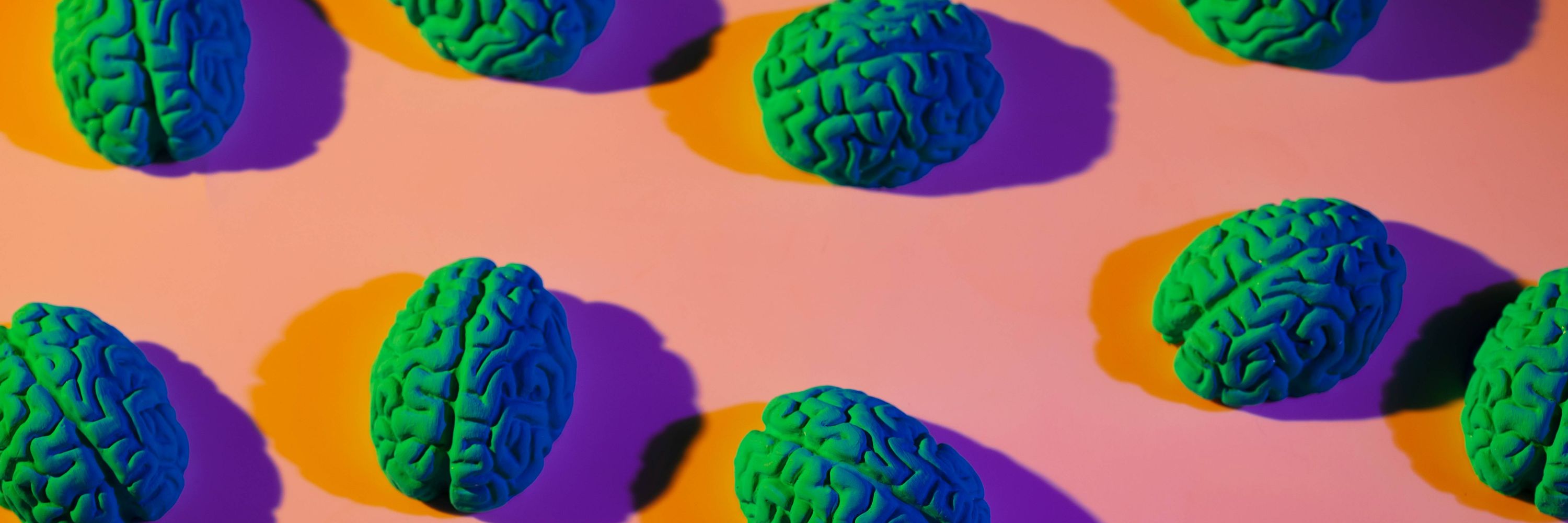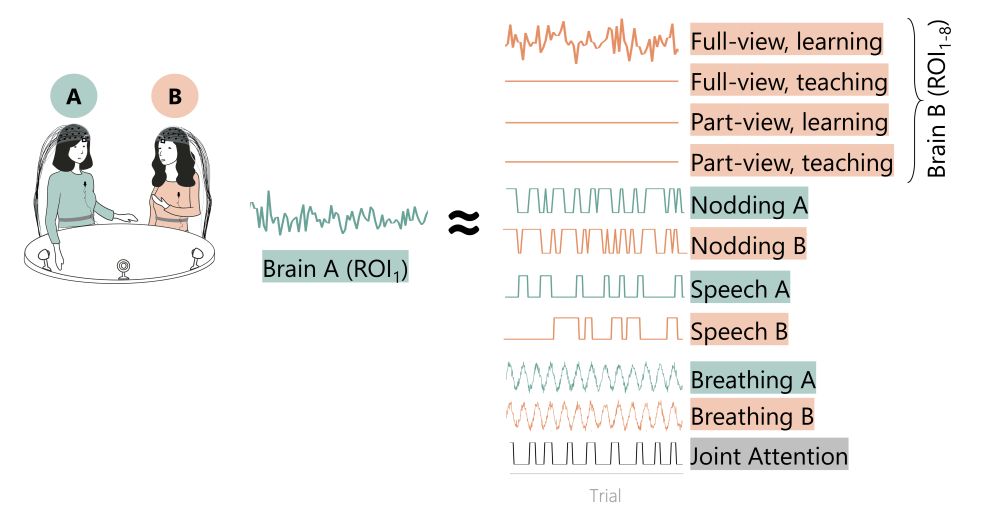
Sara De Felice
@saradefelice.bsky.social
Postdoctoral Research Associate at Cambridge University | forthcoming MSCA Fellow | PhD in Social and Educational Neuroscience | Interested in how people learn from and with others in real-world interactions | URL: sites.google.com/view/saradefelice/home
This has been an amazing team-effort shared with @fdi55.bsky.social Danny Tompkins Uzair Hakim @gabriellavigliocco.bsky.social @paola182.bsky.social @antoniahamilton.bsky.social
July 23, 2025 at 10:31 AM
This has been an amazing team-effort shared with @fdi55.bsky.social Danny Tompkins Uzair Hakim @gabriellavigliocco.bsky.social @paola182.bsky.social @antoniahamilton.bsky.social
This study contributes to move beyond isolated brain analyses toward multimodal models of learning as an emergent property of real-time, reciprocal interaction at both neural and behavioural levels.
July 23, 2025 at 10:31 AM
This study contributes to move beyond isolated brain analyses toward multimodal models of learning as an emergent property of real-time, reciprocal interaction at both neural and behavioural levels.
Importantly, these cross-brain effects remained after accounting for gaze, nodding, speech and breathing, addressing common critiques that INS merely reflects shared sensory input or movement. Instead, we provide evidence for INS being a marker of mutual prediction in naturalistic interactions.
July 23, 2025 at 10:31 AM
Importantly, these cross-brain effects remained after accounting for gaze, nodding, speech and breathing, addressing common critiques that INS merely reflects shared sensory input or movement. Instead, we provide evidence for INS being a marker of mutual prediction in naturalistic interactions.
We found strong effects of speaking: participants showed greater activity in left SPL during self-speaking. In addition, we found that learner’s left SPL activity predicted teacher’s left PMv activity, suggesting role-dependent coordination in the language network.
July 23, 2025 at 10:31 AM
We found strong effects of speaking: participants showed greater activity in left SPL during self-speaking. In addition, we found that learner’s left SPL activity predicted teacher’s left PMv activity, suggesting role-dependent coordination in the language network.
This allowed us to examine asymmetric effects of speaking/listening and teaching/learning, going beyond the predominant focus on symmetric analyses of inter-brain coordination in existing research.
July 23, 2025 at 10:31 AM
This allowed us to examine asymmetric effects of speaking/listening and teaching/learning, going beyond the predominant focus on symmetric analyses of inter-brain coordination in existing research.
Question 2: Can one person’s brain activity be predicted from their partner’s behaviour and neural signals? Here we used a xGLM to model each individual’s activation as a function of self and partner’s gaze, speech, head-movement and physiology & partner's neural data.

July 23, 2025 at 10:31 AM
Question 2: Can one person’s brain activity be predicted from their partner’s behaviour and neural signals? Here we used a xGLM to model each individual’s activation as a function of self and partner’s gaze, speech, head-movement and physiology & partner's neural data.
These findings suggest that different social behaviours engage distinct patterns of brain-to-brain coupling that support learning through different cognitive dynamics.
July 23, 2025 at 10:31 AM
These findings suggest that different social behaviours engage distinct patterns of brain-to-brain coupling that support learning through different cognitive dynamics.
In contrast, during moments of mutual grounding, learning is supported by high mutual gaze and high INS in systems for mutual understanding (TPJ).
July 23, 2025 at 10:31 AM
In contrast, during moments of mutual grounding, learning is supported by high mutual gaze and high INS in systems for mutual understanding (TPJ).
We propose a dual-process model. When teacher and learner are not yet aligned, learning is supported by informational uptake dynamic, with high joint attention, low INS in regions for mutual understanding (TPJ) and coordination (right PMv), and high INS in language-related areas (left PMv).
July 23, 2025 at 10:31 AM
We propose a dual-process model. When teacher and learner are not yet aligned, learning is supported by informational uptake dynamic, with high joint attention, low INS in regions for mutual understanding (TPJ) and coordination (right PMv), and high INS in language-related areas (left PMv).
This analysis revealed that learning was supported by teacher-learner inter-brain synchrony (INS), over regions important for mutual understanding (TPJ) and communicative coordination (PMv). Joint attention and mutual gaze modulated the relationship between INS and learning with opposite effects.
July 23, 2025 at 10:31 AM
This analysis revealed that learning was supported by teacher-learner inter-brain synchrony (INS), over regions important for mutual understanding (TPJ) and communicative coordination (PMv). Joint attention and mutual gaze modulated the relationship between INS and learning with opposite effects.
This paper asks two key questions:
Question 1: Which neural and behavioural dynamics predict successful learning? Here we used wavelet coherence analysis to compute inter-brain synchrony and predict successful learning.
Question 1: Which neural and behavioural dynamics predict successful learning? Here we used wavelet coherence analysis to compute inter-brain synchrony and predict successful learning.
July 23, 2025 at 10:31 AM
This paper asks two key questions:
Question 1: Which neural and behavioural dynamics predict successful learning? Here we used wavelet coherence analysis to compute inter-brain synchrony and predict successful learning.
Question 1: Which neural and behavioural dynamics predict successful learning? Here we used wavelet coherence analysis to compute inter-brain synchrony and predict successful learning.
We recorded simultaneous brain activity from 27 teacher–learner pairs as they taught each other facts about unfamiliar items as well as eye-gaze, speech, nodding and breathing.

July 23, 2025 at 10:31 AM
We recorded simultaneous brain activity from 27 teacher–learner pairs as they taught each other facts about unfamiliar items as well as eye-gaze, speech, nodding and breathing.

